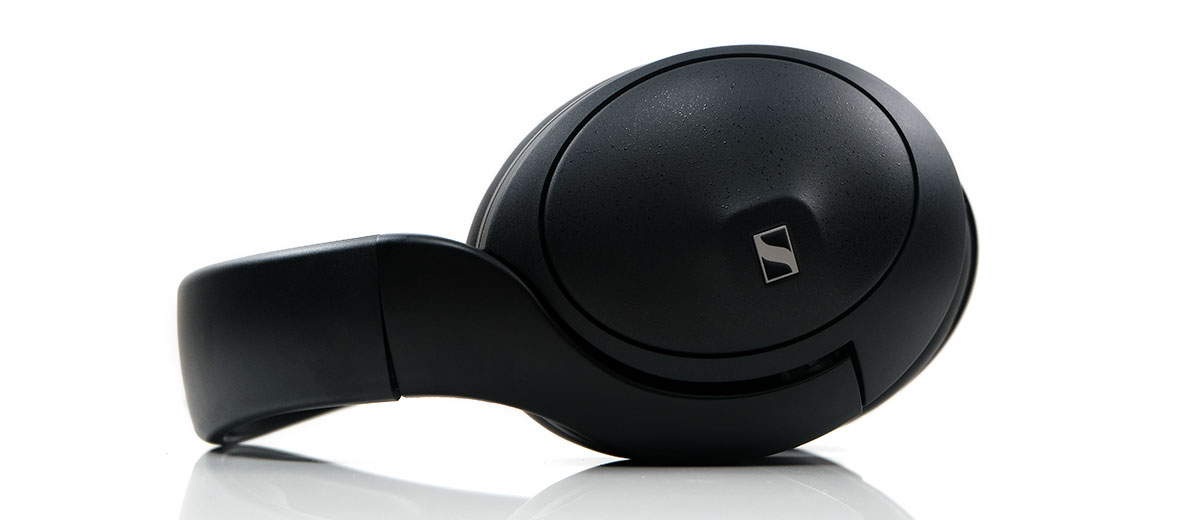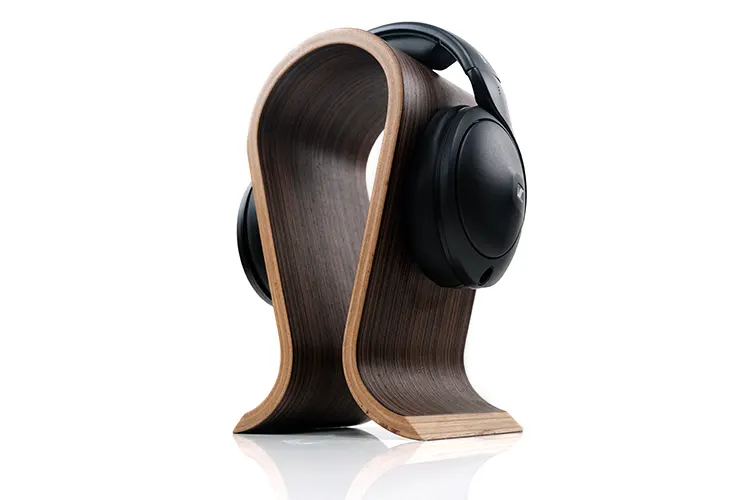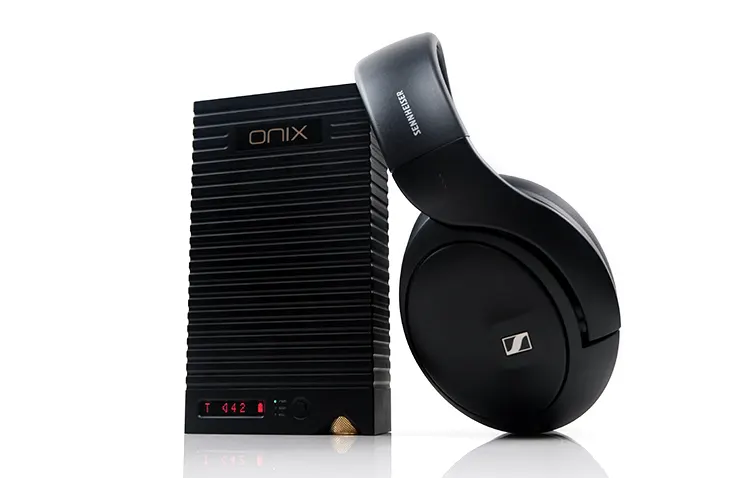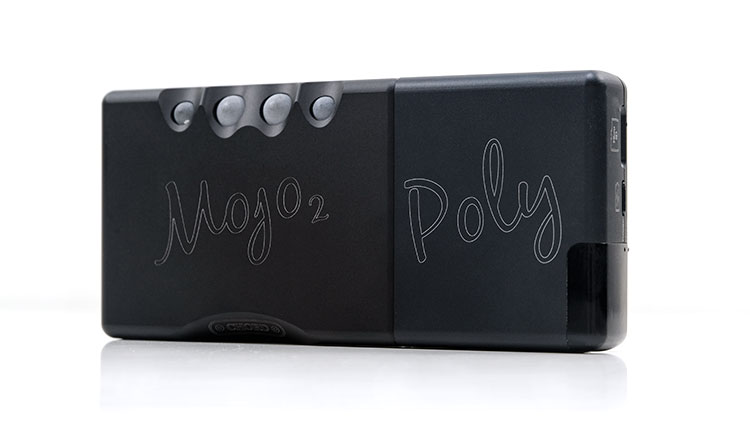Sound Impressions
The following sound impressions of the Sennheiser HD 620S were completed using a mix of the Cayin HA-2A connected to a Cayin Mini-CD MK2 and the ONIX Mystic XP1 with an OTG connection to a Samsung S23 Ultra.
Summary
The HD 620S performs like how you might expect a 600 series to but does not ape any one particular headphone out of that line-up.
Instead, it integrates some of the better aspects of each to create an impressive and likable-sounding set of closed-back headphones that veer closer to a neutral tone than what has come before.
Let’s get the elephant in the room out of the way immediately. They can compete staging-wise and do not sound like a couple of tightly squeezed tin cans. The damping and FR-tuning on the lows to keep the closed-cup resonance largely in check when driven hard is impressive.
At the same time, the HD 620S delivers on the midrange forwardness similarly to the HD 600. Perhaps not quite as smooth-sounding given there is less mid-bass bloom but equally as vivid and acting as a nice counter to the impressive depth and improved power on the lows.
Speaking of the lows, the HD 660S2 bass performance is somewhat borrowed from and improved in the HD 620S. Of all the 6-Series, the HD 620S has the most noticeable sub-bass weight. Mentions of a Harman target type low-end are not too far off the mark.
There is a mid-bass dip where the rest emphasize and show warmth and punch. This, in turn, suppresses the warmth a little, especially with solid-state amplifiers, and helps better define the HD 620S with that more neutral tonal quality through the mids despite its forward nature.
There is some welcome elevation post 6k, but less energy through the lower treble compared to the HD 660S2 or the HD 600. It can sound relatively tall stretching the stage quite nicely for a closed-back but doesn’t carry too much dissonance into vocal sibilance or percussion splashes.
Frequency Response
The frequency response of the HD 620S is closer to Harman than I expected, especially on the bass shelf which is almost on target to 100Hz.
Compared to the HD 600 it is around 8-10 dB higher up to 50Hz and narrowing to around 4-5 dB before you get a similar response from both around 100Hz. You will hear a marked difference between it and the HD 600 for sub-bass presence.
Even the HD 660S2’s improved low-end performance is around 5-6 dB attenuated from the HD 620S with all of the open backs more focused on mid-bass punch and warmth from 100-300Hz.
That region is dipped on the HD 620S so you will hear less warmth and punch compared to the open-back versions. If the recording is not focused on this area for rhythm the HD 620S will sound leaner when compared to the HD 660S/600.
Where there is resonance it is slight with around 1-2 dB of elevation above the target curve in the upper bass to lower mids from 400-800Hz. Still not enough for me to pick up on any obvious bloom though warmer tube amplifiers might accentuate it a little more.
The mids from 1-4k are lifted but more so around 3-4k with the 1-2k range largely neutral in imaging. Higher pitching vocals are more forward but not quite as natural or as smooth as the HD 600 or the HD 650.
From 4-8k the energy drops on the HD 620S but it’s not something I found too concerning. It does take a bit of sting out of the lower treble presence compared to the HD 600 but with a stronger 7-8k peak, there is enough of a harmonic overtone to create some welcome tonal contrast in those mids.
Timbre
I would describe the general tone and timbre of the HD 620S as more natural to neutral relative to the rest of the HD 6 series of headphones. It offers a stronger fundamental but less of a mid-bass punch and bloom compared to the classics.
Though there is some slight resonance in the lower mids the 100-300Hz dip prevents any overt warmth from traveling up into the mids leaving the timbre perhaps a little leaner and more to the neutral side in terms of weight and even harmonics when compared to the HD 650 and HD 600.
The HD 620S does not have the same energetic lower treble ‘fill’ as the HD 660S2, and percussion does not offer the same overt presence and bite, perhaps even less so than the HD 600.
Some will find that a welcome change and yes, it can sound less fatiguing even if the resulting note weight is slightly leaner.
One final observation is that amplifiers with impedance selectors can change the overall tonal balance of the HD 620S. Set the impedance too low and the fundamental becomes quite subdued with a general sound signature that is overly smooth and dull sounding.
However, set the impedance too high and the treble gets overcooked, sounding quite ‘stressed’ combined with a very excitable low-end. The tonal signature is vibrant and exciting but lacks cohesion through the mids with too much contrast creating listening fatigue over time.
Staging & Dynamics
I honestly do not think too many fans of the Sennheiser open-back series will be disappointed with the staging performance of the HD 620S.
It has excellent depth and power for the range, perhaps the best of the series thus far, and is surprisingly airy up top. You will hear a relatively forward midrange with higher pitching vocals the highlight of the show in terms of focus though overall just a shade behind the HD 600 in body.
The mid-bass aggression is a bit flatter, probably the least punchy in the range if the sub-bass is not being called upon but in turn, I think that helps keep things cleaner and clearer through the mids adding to the perception of space and clarity.
Some HD 600 and 660S2 owners might find the lower treble more muted in terms of presence from the HD 620S. I am in two minds about that because the better 7-8k lift does help with perceived headroom but if you enjoy energetic percussion bite it’s not as good as those two.
Sources and amps will have a bearing on the staging properties. I found myself enjoying pairings that accentuated the lows compared to dead-neutral alternatives.
Tube amps, warmer and more powerful DAPs such as the FiiO M15s injected some healthy body into the HD 620S bass. Whereas cleaner alternatives such as the iBasso DX240 tightened the delivery, and improved the punch but left the weight behind a bit and shifted the staging focus more to the mids.
Again, watch your impedance selectors if you have them on amplifiers. Impedance mismatches can either flatten and reduce the dynamics from the HD 620S if too low or overcook them and throw the treble and bass off balance if too high.
Synergy
Efficiency & Sensitivity
The Sennheiser HD 620S is rated at 150Ω impedance with an SPL of 110 dB @1 kHz / 1 Vrms which makes it the only ‘lower impedance’ model current in the 6XX series lineup. The original HD 660S was also 150Ω but is now discontinued in favor of the 300Ω HD 660S2.
The HD 620S is also several dB more sensitive on paper compared to the rest of the 6-series lineup at 110 dB @1kHz 1Vrms SPL.
Our three compared models, the HD 660S2, HD 650, and HD 600 start around 104 dB @1 kHz / 1 Vrms and drop down to 97 @1 kHz / 1 Vrms in the case of the HD 600.
On a high level, that means the HD 660S will be easier to drive compared to its sibling 6XX models and opens it up to more portable options such as dongles and DAPs.
The caveat is that the HD 620S only comes with a single-ended 3.5mm TRS cable which means reduced power and performance from some portable sources.
For example, the Cayin RU7 dongle DAC drops from 400mW balanced to 140mW SE on a 32Ω load, meaning roughly 85mW on a 150Ω load balanced and just 30mW SE which isn’t ideal for the HD 620S.
The sensitivity level will mask any potential volume issues and with the 3.5m TRS connection, I can get decent loudness with the HD 620S.
However, the sound isn’t as extended or solid through the lows and the mids when compared to beefier sources such as the ONIX Mystic XP1 which gives me a more accommodating 240mW @150Ω single-ended.
This is where the ‘coming soon’ balanced 4.4mm terminated cable would come in handy to maximize the potential of dongles when paired with the HD 620S.
Amplification Suitability
I tested 3 desktop amplifiers with the HD 620S including the Ultralinear HA-2A from Cayin, the OTL Feliks Audio EUFORIA evo, and the ONIX Mystic XP1 via its DC-input, (converts it from portable to desktop).
All 3 either have plenty of output power at 150Ω or in the case of the two tube amplifiers have a strong voltage bias.
The EUFORIA evo is capable of up to 280mW of SE output power with 20 dB of gain into a 300Ω load which is more than enough for the assumed maximum wattage rating of the 150Ω HD 620S dynamic driver. Its output PO is also rated at 65Ω so it is not an amplifier well suited to low impedance headphones either.
The Cayin HA-2A has more of a tailored approach with its output power closely linked to an impedance selectable switch and the type of connection you are using.
For SE, the maximum rating is 750mW but this is with the impedance value set to 251-600Ω. The correct setting for this amplifier pairing is the medium gain switch at 65Ω to 250Ω. The power drops to 550mW but it is still more than enough for the HD 620S.
The Mystic XP1 is a solid-state transportable balanced-designed amplifier that can run in either DC-input or battery mode.
Battery mode single-ended is a bit on the weaker side at just 45mW into a 150Ω load. You will hear a substantive difference with the HD 620S when using its DC-input M-Power mode which jumps to 240mW for the same load and increases the voltage bias from 2.6Vrms to almost 6Vrms.
Tonal Differences
Out of the three tested amplifiers, the EUFORIA evo produced the most refined and airiest performance from the HD 620S while retaining excellent depth and a smooth tonal presentation. It also delivered more resolution and spatial detail than the Cayin alternative.
Granted, it is the most expensive of the 3 amplifiers but it was a good test to see how well the HA 620S can ‘scale’ with a good amp and some quality 300B tubes.
With the HD 620S set to the Cayin HA-2A high impedance rating, it is very dynamic and full sounding but it might sound somewhat stressed in the highs and a bit too shouty through the mids. A setting like this will sound fatiguing after a very short time.
The presentation from the HA-2A medium impedance setting is much smoother through the mids though still quite rich and full sounding throughout. The FR balance is also more coherent with less ‘stress’ on the treble and a slight reduction on the mid-bass punch. This is an ideal and more relaxing listening experience.
Dropping to the HA-2A’s low impedance shrunk the soundstage and reduced the depth and impact of the HD 620S low-end. It is far too controlled-sounding and to be frank, quite dull in its performance with the HD 620S.
The Mystic XP1 delivers excellent dynamics with a more neutral and slightly drier tone to the HD 620S than the two tube amplifiers.
The bass presentation is tighter with slightly less upper-bass warmth and a vocal image that is less forward-sounding. The treble is cleaner and more energetic which takes a bit of that ‘tube warmth’ out of the mids hence that drier description.
Portable Pairings
The HD 620S will do better with portable pairings than you might expect for a set of 150Ω-rated headphones.
Granted, its current SE-only stock cable does limit the potential with weaker dongle single-ended performances but once you start moving up to the likes of the Mojo 2, or the FiiO M15s and the excellent Q7 then you begin to hear the improved dynamic range and better bass response.
If there is one dongle I did enjoy single-ended with the HD 620S then it was the HiBy FC6 which is SE only anyway but with plenty of gain.
It is not as resolving as the RU7 and you will hear a lack of complexity in the staging performance but what the FC6 brings is weight and authority on the lows and that makes a big difference in the enjoyability of the HD 620S performance from weaker sources such as these.
It’s a similar setup with the DAPs and larger portable amplifiers. For example, the iBasso DX240 gives me around 64mW on the 150Ω load and it does sound clean and tight but lacks the more gratifying bass texture and bloom of the more powerful and richer-sounding 186mW capable FiiO M15s on its SE output.
I can get closer to a mix of the clarity and bass response with the 128mW capable Mojo 2. Out of all the simpler portable setups, I felt this one was the most reference-like and natural sounding in its delivery with adequate staging depth from the HD 620S.
I still gravitated to the slightly warmer and more bass-heavy pairings where the likes of the Q7, FC6, and the M15S excelled. The HD 620S sounds more complete and enjoyable to my ears when some weight and depth are present in its performance.





